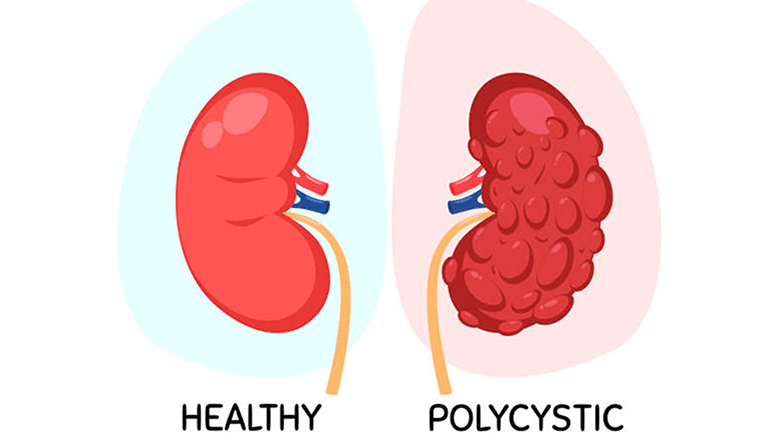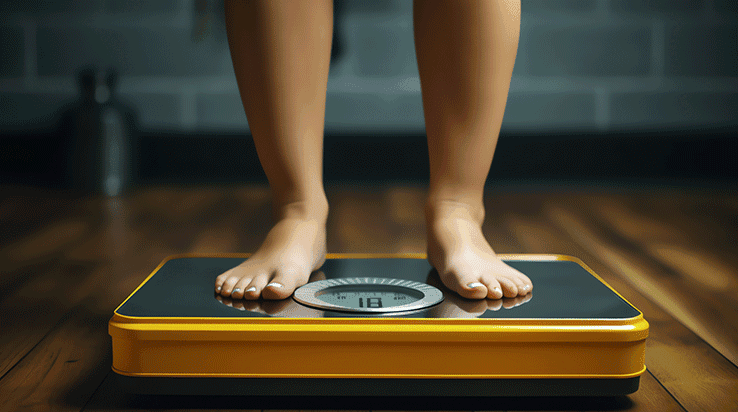The Ultimate Guide to Polycystic Kidney Disease Treatment: Everything You Need to Know
By:

Apex Hospitals
14-07-2023 5 Min Read

Introduction: Understanding Polycystic Kidney Disease
Polycystic kidney disease (PKD) is a genetic disorder that causes numerous kidney cysts. These cysts are fluid-filled sacs that can grow in size and number, eventually leading to kidney damage and failure. PKD is a progressive condition that can affect both kidneys and is India's fourth leading cause of kidney failure. There are two types of PKD: autosomal dominant PKD (ADPKD) and autosomal recessive PKD (ARPKD). ADPKD is the most common form of the disease, affecting about 90% of people with PKD. ARPKD is a rare form that usually starts in infancy or childhood.
What Causes Polycystic Kidney Disease?
PKD is a genetic disorder caused by mutations in the PKD1 or PKD2 genes. These genes provide instructions to make proteins responsible for kidney development and function. Mutations in these genes can disrupt the typical structure and part of the kidneys, leading to the development of cysts. PKD is an inherited condition passed down from parents to their children. If one parent has PKD, there is a 50% chance that their child will inherit the disease.
Autosomal dominant polycystic kidney disease (ADPKD)
People with ADPKD are born with kidney lesions, but symptoms typically do not manifest until age 30 to 40. There is only one progenitor gene responsible for ADPKD. This is the most common form, caused by a PKD1 or PKD2 gene mutation. It follows an autosomal dominant inheritance pattern, which means that if one parent carries the mutated gene, there is a 50 per cent possibility that it will be passed on to each child.
Autosomal recessive polycystic kidney disease (ARPKD)
In this type of PKD, genes from both parents are liable for the disease. PKHD1 gene mutations are the cause of this rare disease. It follows an autosomal recessive inheritance pattern, which means that both parents must carry the mutated gene for an affected child to be born, with a 25% chance of having an affected child. Additionally, this is an uncommon disease, affecting 1 in 400 newborns.
Symptoms of Polycystic Kidney Disease
In the early stages of PKD, there may be no symptoms. As the cysts grow in size and number, they can cause the kidneys to enlarge, leading to symptoms such as:
- Pain in the back or sides
- High blood pressure
- blood in the urine
- frequent urination
- urinary tract infections
- kidney stones
- fatigue
- loss of appetite
- headaches
- swollen abdomen
Complications of Polycystic Kidney Disease
If left untreated, PKD can lead to severe complications such as:
- High blood pressure
- kidney failure
- Cysts in other organs, such as the liver and pancreas
- Brain aneurysms
- Heart valve abnormalities
- Diverticulosis: Insufficiencies and cavities or sacs in the colon wall
- Haematuria
- Chronic pain
- Pregnancy complications
How is Polycystic Kidney Disease Diagnosed?
For polycystic kidney disease, the size and number of kidney cysts as well as the quantity of healthy kidney tissue, can be determined by the following tests:
Ultrasound: During an ultrasound, a transducer, like a wand, is inserted into your body. Like sonar, it generates sound waves that are reflected to the transducer. The reflected sound waves are converted into images of your kidneys by a computer.
CT scan: While lying on a movable table, you are guided into a large, doughnut-shaped device that emits thin X-ray pulses through your body. Your physician can view images of your kidneys in cross-section.
MRI scan: Magnetic fields and radio waves produce cross-sectional images of your kidneys as you lie inside a large cylinder.
Treatment Options for Polycystic Kidney Disease
The most common polycystic kidney disease treatment are:
Blood pressure management: Your doctor assists you in managing your blood pressure through medication, diet, and exercise. Maintaining a healthy blood pressure reduces your risk of heart disease and stroke.
Growth of kidney cyst: Tolvaptan therapy may be recommended for individuals at risk for Autosomal Dominant Polycystic Kidney Disease (ADPKD) with rapid progression.
Pain Management: Medicine can treat pain brought on by kidney stones, infections, or ruptured cysts. Any painkillers you use should have your doctor's approval. Some drugs have the potential to worsen kidney disease.
Declining Kidney Function: Water and other fluids consumed throughout the day may aid in reducing kidney cyst growth, which may lessen the rate at which kidney function is lost. A low-salt diet and a reduced protein intake may help kidney cysts adapt to the increased fluid intake.
Bladder or kidney infection: Antibiotics must be used quickly to treat infections to prevent kidney damage.
Dialysis: You could require dialysis (a process to purify the blood) if you have kidney failure.
Surgery for Polycystic Kidney Disease Treatment
Surgery may be necessary to treat complications of PKD, such as kidney stones, cyst infections, or bleeding cysts. Surgery may sometimes remove one or both kidneys and replace them with a healthy donor kidney.
PKD is a complex condition that requires a comprehensive treatment approach. By understanding the symptoms, causes, and treatment options, you can take control of your PKD and manage the situation effectively.
Related Articles
Connect With Us
Health In A Snap, Just One App.
KNOW MORE































































